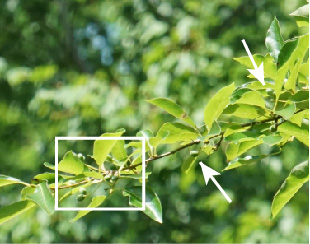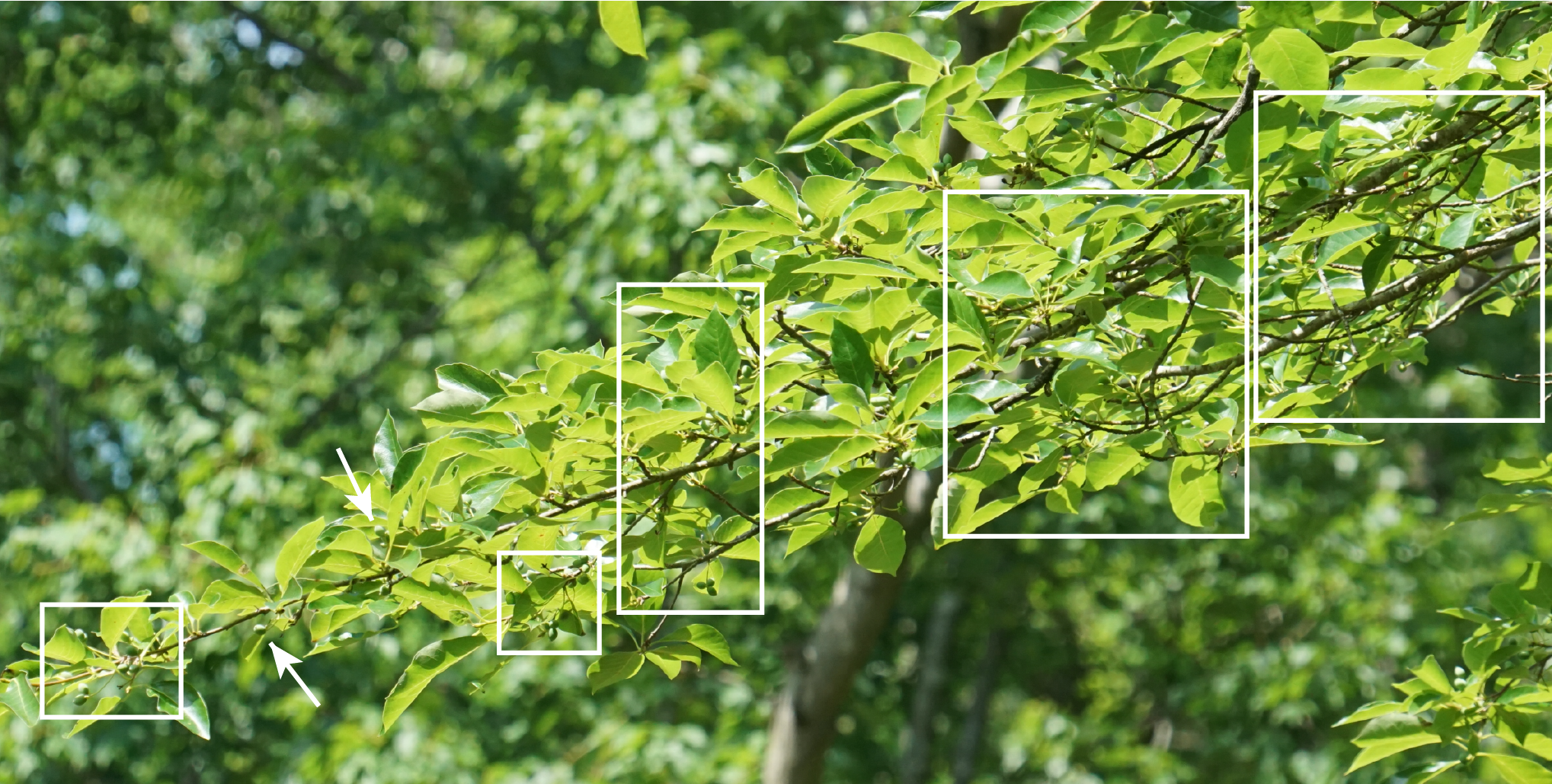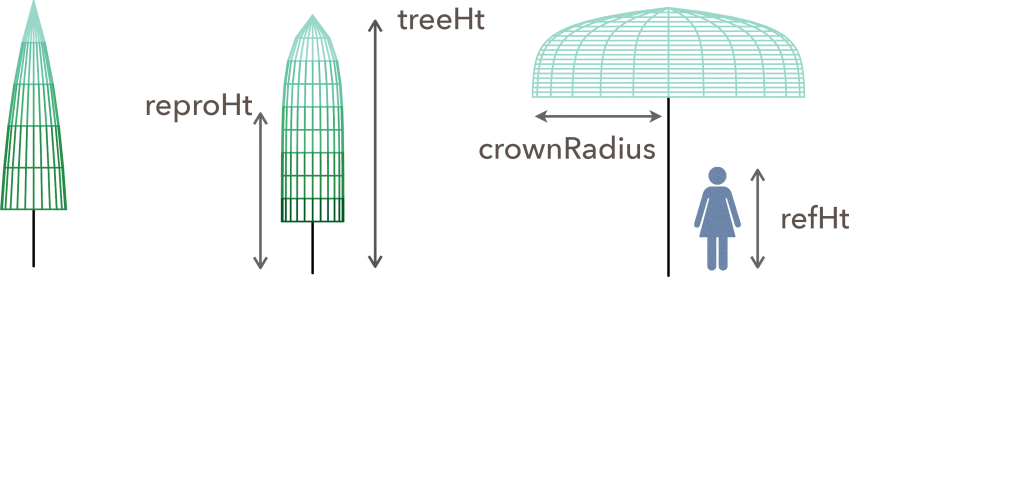You can contribute
MASTIF home
Counting Mast
Starting in May 2019, the MASTIF project has a citizen science component on iNaturalist, allowing you to track fruit, seed, and cone production from trees you observe, while assisting scientific efforts to understand tree fecundity and its contribution to biodiversity.
Scientists from universities and government agencies are synthesizing mast data to understand the variables that control mast production, including forest management and climate change. An overview is here.
Mast production can be erratic, ranging from thousands of seeds per tree one year to zero the next. Tracking mast over time is used to quantify the variation in food supply for wildlife and availability of a seed source when new habitats come available for tree regeneration.
The effort benefits when the same trees are visited year after year or when a tree is visited once. A one-time measurement is assimilated with the other observations in that area.
To contribute, download iNaturalist to a cell phone. Then join the iNaturalist project “MASTIF“.
Mast can be counted as numbers of seeds/fruits/nuts/cones/pods. This is the “cropCount”, described more below.
Mast tracking often benefits from a few items:
- binoculars for counts from trees
- a diameter tape (if not available, a piece of string)
- a cell phone
When to count?

Seeds/fruits/nuts/pods can be counted at the time of year when they are most visible, which differs for each species. Mature conifer cones may be most visible when still green before opening in autumn (even late spring or summer) or after leaves of deciduous species are shed in fall.
Many types of seeds are best counted just before they are shed in autumn. Note that seed abortion rates can be high, so counts too early in the season may over-estimate the crop. For example, the post oak pictured above holds many more acorns than will survive to autumn. The date of each observation is recorded in iNaturalist, providing information on potential attrition before seeds reach maturity.
Which trees to count?
Tree selection for counting can consider species, habitat, and size class. An observer can make efforts to find trees based on any of these factors for purposes of representing the range of variables that affect tree fecundity. The factor that cannot be used to select trees is the number of seeds on a tree.
In tree selection, any consideration of numbers of seeds on the tree will bias the analysis. For example, a tree lacking seeds cannot be omitted simply because there is nothing to count. If I omit all trees lacking seeds at the time of year when seeds would be observed, then data will lead to an overestimate of fecundity. If there are no seeds the observation enters as a crop count of zero. I say more about zeros below.
Conversely, I cannot ignore a tree because there are too many seeds to count. If I only include trees with sufficiently low numbers to assure accurate counts then data will lead to an underestimate of fecundity. Because it is critical that trees with high fecundity be represented in the data, they must be estimated.
Too many to count

In a given year a tree might produce up to hundreds of thousands of seeds. These counts must be represented in the data, even if imprecise. Crop counts in years like this require approximation methods. In the photo at right is the end of a Nyssa sylvatica branch taken in a large crop year. The white arrows each point to an individual fruit. The white box bounds 10 fruits. (They are much easier to identify with binoculars where the focus gives depth of field). If I tried to count every seed I would lose track of which ones I had already counted.
Instead, I form a search image for 10’s of fruits. To illustrate, see the second photo of the same branch, where I outline clusters of 10 fruits. I estimate and count clusters of 10. Where fruits are extremely abundant I might count by 100’s. Again, this is much easier with binoculars than it appears from a 2-D photo.
Based on how fruits are obscured by foliage I estimate a fraction of the crop that my count represents.

This method is surprisingly repeatable, accounting for the widespread use of crop counts in forestry and wildlife management. Members of our lab typically report counts within +/- 10%, a small source of variation relative to the order of magnitude differences between trees and within the same tree over years. The uncertainty in counts brings us to the question of precision.
How precise?
Many of the valuable mast surveys used by foresters and wildlife managers recognize that even simple ordinal scores like ‘low’ and ‘high’ can be valuable tools for summarizing important variation. Despite being approximate, they are valuable because crops for many trees will vary over orders of magnitude from year to year.
Accuracy will depend on the methods you use. For conifers with a small number of cones in open canopies you may report precise numbers (e.g., the cones of longleaf pine). For prolific seed producers you might report counts to the nearest 10, 100, or even 1000 (e.g., high seed years for many hardwoods like red maple, ash, black gum). The observation fields in the MASTIF project of iNaturalist help us to determine the accuracy of counts. By including estimates of the crop fraction in our surveys we allow for the observer’s assessment of uncertainty. Concerns about imprecise counts need not deter you from offering approximate estimates.
Zeros are fine!
Just like animals, a young tree may not yet be mature. Some species have both male and female individuals (they are “dioecious”). Examples in North America include red maple, boxelder, ash, eastern redcedar, paw-paw, persimmon, and black gum. A mature tree may have a failed crop in a given year. It’s important for us to understand conditions leading to reproductive maturity, sex ratios for a species, and conditions that lead to crop failure. When you record zeros be sure that you are counting at a time of year when the crop would be visible for trees that are reproductive. At those times, don’t hesitate to report a cropCount = 0.
One-time and repeated counts
Both are valuable.
The MASTIF synthesis described here includes decades of repeated observations on tens of thousands of trees. The MASTIF project on iNaturalist is new, so current observations are one-time. Repeated observations on the same tree, year after year, help us understand the intervals between masting events. If you return to the same individual year-after-year, give it a unique tag in the treeIdentifier field of the MASTIF project. We’ll recognize it as a repeat for that individual.
Don’t hesitate to count trees in interesting places that you will not repeat in future years. One-time observations on an individual are still valuable, because they contribute to our estimates of the ‘year effect’ for the species and site.
Planted trees
Trees planted outside where they might naturally occur extend our understanding of how a species might fare with environmental change, including warming and habitat shifts. We welcome observations on planted individuals with these considerations in mind:
- identify the individual as ‘captive’ on iNaturalist
- avoid individuals that are:
- watered or fertilized (e.g., golf course fairways, formal gardens)
- pruned, coppiced
- surrounded by impervious surfaces
- near easements potentially affects by herbicides
- near high-traffic where pollutants are elevated
What to count?
A crop count can be obtained on any structure that holds seeds, including individual seeds, fruits, cones, and pods. Many conifers have highly visible green cones in summer and autumn. Some hardwoods retaining fruiting structures after leaf fall and can be observed before they are shed in winter/spring. Examples include sycamore, tulip poplar, and sweet gum.
Observation fields in iNaturalist
treeIdentifier to help you identify the individual in subsequent years: Crop counts can be repeated on a tree each year. The treeIdentifier can be a tree tag number of a simple acronym that helps recover information or location for the tree.
stemDiameter or stemCircumference to relate seed production to tree size: Tree diameter at breast height (1.3 m or 4′ high) is typically measured with a diameter tape (D-tape). If you want to purchase one, here are some options. If you don’t want to purchase a D-tape, you can measure circumference with a flexible tape. Or mark the circumference on a string, then measure it.
cropCount/cropFraction: The cropCount of seeds, cones, or fruits is typically a subset of the full crop, depending on visibility. The cropFraction is the estimate of the fraction of the total crop represented by the cropCount, e.g., 0.3.
Here are several ways to obtain these observations:
- Complete count: For some trees, the entire crop is visible with binoculars. For example, longleaf pine trees in the southeastern US produce large cones on trees in open stands with sparse foliage. Short-statured trees, e.g., dogwood, may also allow for a complete count. Even for this ‘complete count’ an estimate of the cropFraction is required, perhaps as high as 0.99.
- Crop fraction: A fraction of the crop is counted when the full crop is not visible or when there are too many seeds/cones/fruits to count. In this case, the count represents a fraction of the total, estimated as the cropFraction. If a fraction of the crop can be observed, the cropFraction accounts not only for how much of the crown was observed, but also for the tendency of seeds to be concentrated at the top of the crown.
Another method is to count the number of seeds on several branches—the cropFraction estimates the fraction of the crop represented by the branches counted.
Still another method is to count seeds that fall within a fraction of the crown area beneath the tree. This method is used for trees having seeds that are not wind dispersed (they fall directly beneath the crown) in places where trees of the same species are separated from one another so each tree’s seeds can be identified. The cropFraction for this method is the area counted divided by the area of the crown, which is estimated from the crown diameter.
cropYear is the year when seeds will be shed from the tree. There is a cropYear2 if more than one crop year is present on the tree. An example would be a cone count in spring for developing cones of the current year and open cones that shed seed during the previous winter. Then the crop count for that year enters in the field cropCount2.
canopyClass summarizes the light environment, which is important for fruit/cone/seed production. Five classes come from the USDS Forest Inventory and Analysis (FIA) program:
- Open Grown– Full sun, not touching other plants, with crowns that have received full light from above and from all sides at least in recent years. The crown shape appears to be free of influence from neighboring plants.
- Full sun– crowns receiving full light from above and partly from the sides.
- Partially shaded– crowns receive full light from above but little direct sunlight penetrates their sides.
- Mostly shaded– individuals that receive little direct light from above and none from the sides.
- Full shade– individuals that receive no direct sunlight either from above or the sides.
Additional parameters on crown architecture can be recorded, but this is optional. If you do this, it helps to have a photo of the crown:
crownRadius in m
treeHt in m
reproHt in m is the height to the beginning of reproduction
refHt in m is the height of a reference object in the picture


